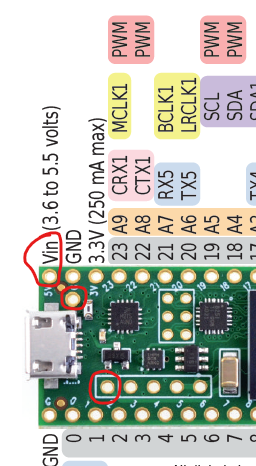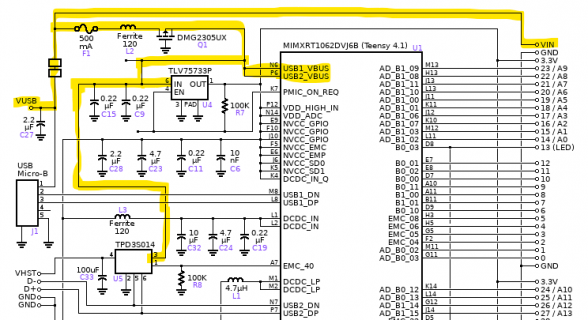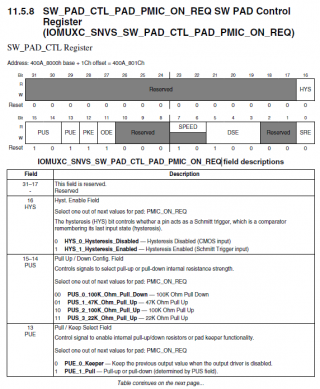I tested VIN pin (says VIN on reference card but 5V silk screen on board) and the VUSB pin (on back side of card) that is next to it, off from the main row of pins. They are connected. I imagine if I cut the trace between the two pads on the back side, I get them separated. So VIN goes to 3V3 regulator and VUSB is connected to the microUSB connector, correct?
Then what about the +5V pin on the USB host header? It's not connected to VIN or VUSB. So is it connected to the transistor and can be switched on/off? I'm trying to supply power via this 5-pin USB host header but its voltage isn't high enough for bar code scanners only about 4.8xV. I had to rig 5V and GND from another USB connector on my PC. I'm still curious whether it's controlled by a transistor and how to toggle its power. Thanks.

Another question, except for the 3V3 regulator and the +5V on USB host header, nothing really needs 5V, right? So if I supply regulated 3V3 to 3V3 headers, the board should work, right? My regulator has 500mA capability. I wonder if the 3V3 (250mA max) means the onboard regulator can only do 250mA or the regulator has 250mA to spare, i.e. consumption from the regulator is 250mA less than its rated current. Thanks.
One last thing, what is the on/off pin's function?
Then what about the +5V pin on the USB host header? It's not connected to VIN or VUSB. So is it connected to the transistor and can be switched on/off? I'm trying to supply power via this 5-pin USB host header but its voltage isn't high enough for bar code scanners only about 4.8xV. I had to rig 5V and GND from another USB connector on my PC. I'm still curious whether it's controlled by a transistor and how to toggle its power. Thanks.

Another question, except for the 3V3 regulator and the +5V on USB host header, nothing really needs 5V, right? So if I supply regulated 3V3 to 3V3 headers, the board should work, right? My regulator has 500mA capability. I wonder if the 3V3 (250mA max) means the onboard regulator can only do 250mA or the regulator has 250mA to spare, i.e. consumption from the regulator is 250mA less than its rated current. Thanks.
One last thing, what is the on/off pin's function?



